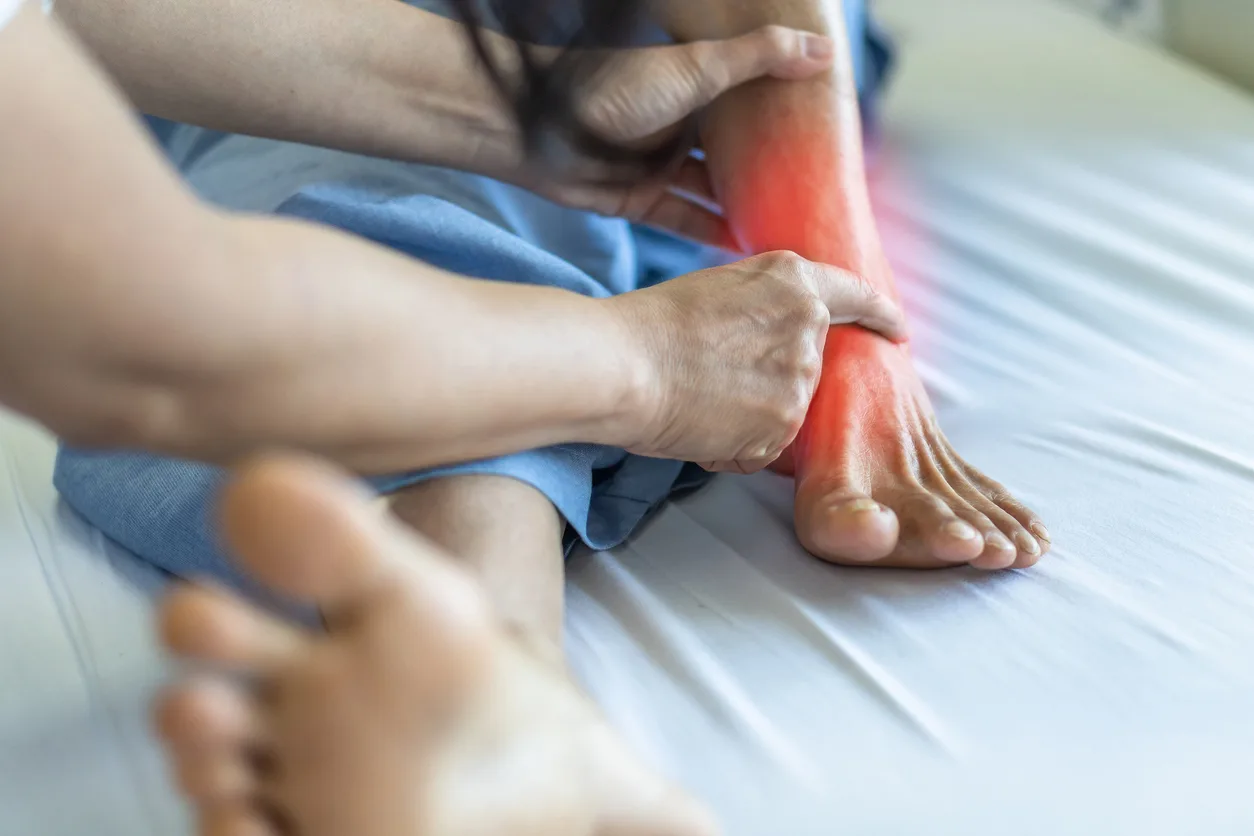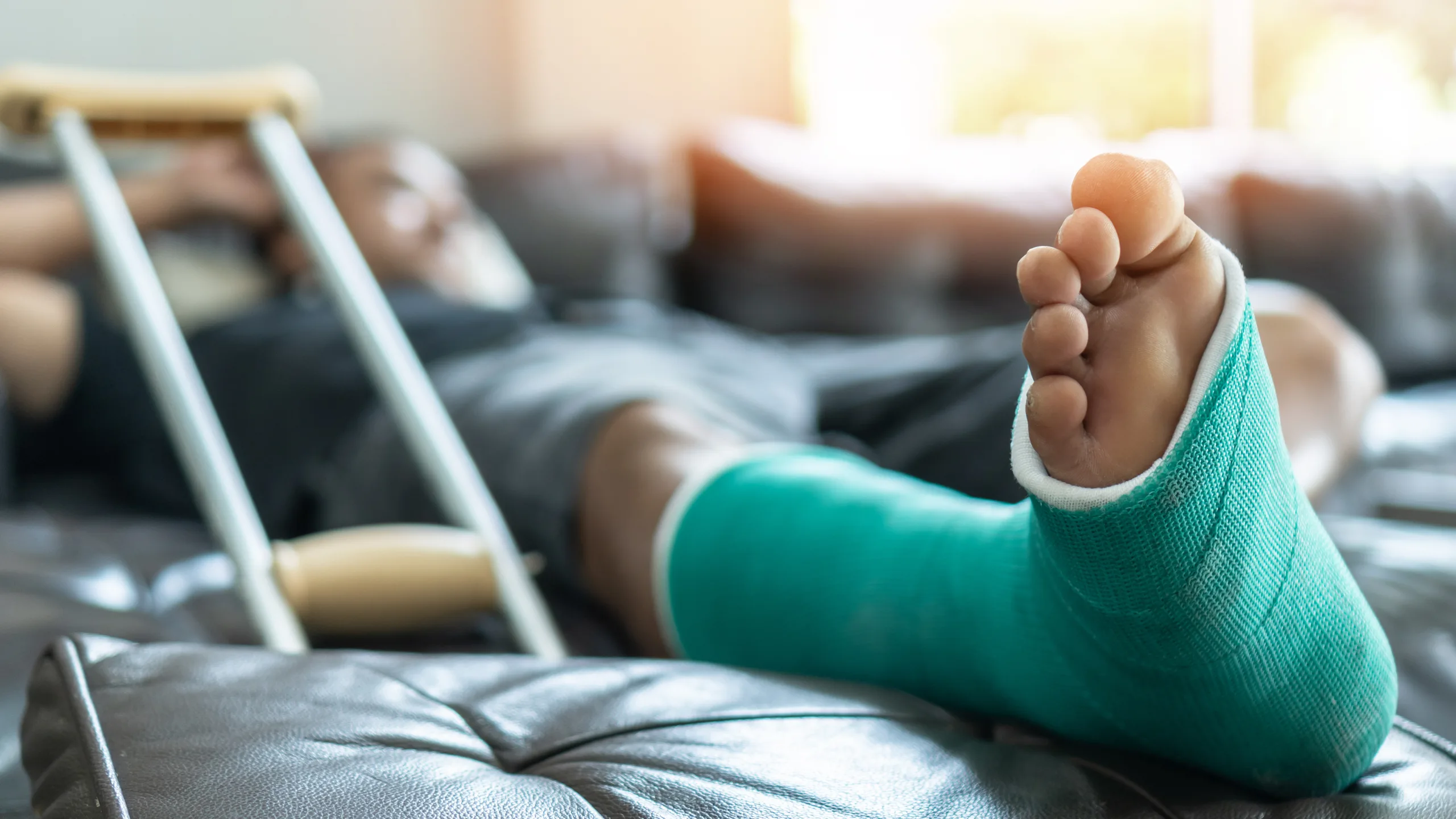Home > Resources > Broken Bones
Broken Bones

Many people have the misfortune of breaking a bone at least once in their lives. Fractures can be relatively mild injuries. But they can also be severe enough to crush the bone and break it into many pieces.
Breaking a bone is, of course, often very painful. But beyond that, a broken bone can also disrupt your life significantly. Here’s what you need to know about several types of fractures and the ways by which they’re diagnosed and treated.
Table of Contents
- What Are the Different Types of Fractures?
- How Do You Diagnose a Fracture?
- How Are Broken Bones Treated?
- Do You Have Broken Bones Because of Someone Else’s Actions?
What Are the Different Types of Fractures?

Unfortunately, there are many different ways in which broken bones occur. Some heal faster than others, and some require surgery to heal correctly.
In a very broad sense, there are categories of broken bones:
- Closed Fracture: Also known as a simple fracture; the bone is broken, but the skin isn’t disturbed
- Open Fracture: Also known as a compound fracture; the broken bone either protrudes through the skin or the surrounding skin is wounded enough to reveal the bone
As said, these are two general classifications. There are many more types of fractures to know about, including each of the following:
Transverse Fractures
In a transverse fracture, the bone is broken in a straight line that runs across itself, perpendicular to its length. These fractures are often caused by acute trauma, such as falls, car accidents, and very sudden twisting movements.
Greenstick Fractures
When you try to snap a new, green twig, it often breaks on one side as it bends, hence the name “greenstick fracture.” These fractures usually happen to young kids (those under ten years old) because their bones are not yet as hard as those of adults.
The most common cause of a greenstick fracture is falling down on an outstretched arm. However, these fractures can also be caused by most other forms of trauma.
Spiral Fractures
In a spiral fracture, the break forms a spiraling line around the bone. Most often, these fractures are caused by forceful twisting motions.
Compression Fractures
In a compression fracture, a bone is crushed. These kinds of fractures are particularly common in people who have osteoporosis, as their bones are weakened by the condition. Compression fractures often affect the spine and are usually treated with specialized back braces.
Oblique Fractures
In an oblique fracture, the crack in the bone runs diagonally across. Many oblique fractures happen when something hits your bone at an angle, so they often happen in sports, car accidents, or falls.
Segmental Fractures
As its name suggests, a segmental fracture breaks your bone in two places. The result is the bone being divided into three pieces, with one of these pieces “floating” between the other two. These fractures almost always happen as a result of trauma.
Comminuted Fractures
A comminuted fracture is one in which a single bone breaks into at least three pieces and there are bone fragments around it. These fractures are difficult to treat and often cannot heal properly without surgical intervention.
Usually, a surgeon will need to use pins and wires, screws and plates, or metal rods to hold the pieces together and allow the bone to heal back into one piece.
How Do You Diagnose a Fracture?
If you’ve broken a bone, even in the event of a minor fracture, you might notice these symptoms:
- Swelling in the area
- Redness or warmth in the area
- Sudden, often severe pain
- Trouble moving the area of the injury (or severe pain when you try to do so)
If you believe you have broken a bone, seek aid from a medical professional right away for a proper diagnosis and treatment.
Unless you have an obvious compound fracture, your doctor will typically perform some type of imaging test to get a clear picture of the injured area. Once they can see what’s going on, they can formulate a treatment plan.
There are three imaging tests often used to diagnose broken bones:
X-Rays
X-rays use beams of energy that are invisible to the naked eye in order to create clear pictures of bones. An X-ray is faster than other imaging tests, but it doesn’t give you the same detailed view of the tissues surrounding the bone.
CT/CAT Scan (Computed Tomography Scan)
Consider a CT scan akin to an enhanced X-ray. It combines an X-ray with computer technology to provide a more detailed view.
MRI (Magnetic Resonance Imaging)
MRIs are also very detailed. They use computers, magnets, and different radio frequencies to provide doctors with a clear look at the affected area.
How Are Broken Bones Treated?
The kind of treatment you’ll receive depends on the type of fracture you have and where it’s located in your body. Nevertheless, these are some of the most common treatments:
Casts, Splints, and Braces
These treatments make it so you can’t use the bone or move it out of the alignment it needs to be in to heal. They often immobilize the joints above and below the injured bone as well in order to minimize the movement of muscles, tendons, and other tissues nearby.
Traction
A form of treatment that has been in use since the thirteenth century, traction usually involves using pulleys or weights to stretch the injured area. In turn, the surrounding muscles and tendons are extended, keeping the bone aligned so it can heal. Traction is a form of treatment generally used for broken bones in the lower body.
Surgery
If, despite treatment, your bone isn’t returning into place, you might need surgery. Some fractures will need “internal fixation” (metal devices inside your body) or “external fixation” (metal devices outside your body) to hold the fracture in place. In certain cases, though, a surgeon may be able to reset the bone without putting any metal in or on your body.
Do You Have Broken Bones Because of Someone Else’s Actions?
In many instances, broken bones happen because of genuine accidents. However, they also occur nearly as often because of the negligence of a person, business, or other entity. For example, imagine you walk into a store. The floor has just been mopped, but there’s no “wet floor” sign. As a result of the hazard, you slip, fall, and break your hip.
In such a case, the grocery store didn’t take reasonable precautions to protect you and other customers from injury. That means it may be liable for your medical bills, any wages you missed because the broken bones prevented you from working, and compensation for your pain and suffering.
A skilled personal injury lawyer can help you prepare a strong case and fight for you to get the compensation you deserve. At Zehl & Associates, our undefeated team is ready to help you. Stop by our Houston office, contact us at 888-603-3636, or send us a message today to schedule a free consultation.
FREE CASE REVIEW
Fill Out the Form Below for a Free Case Review with our Undefeated Personal Injury Lawyers
All communications are private and confidential. This site is protected by reCAPTCHA and the Google Privacy Policy and Terms of Service apply.